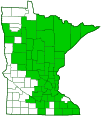hooked buttercup
(Ranunculus recurvatus var. recurvatus)
Conservation • Wetland • Description • Habitat • Ecology • Use • Distribution • Taxonomy
Description |
||
Hooked buttercup is a common, easily identified, woodland spring wildflower. It occurs in the United States from Maine to South Carolina west to Minnesota and Oklahoma, and in adjacent Canadian provinces. It is found in wet to moderately moist or sometimes dry woodlands, in woodland openings and trails, on banks of rivers and streams, and in swamps and fens. It grows in rich organic soil under light to medium shade. It produces small flowers that are not showy from May to June. It is poisonous when eaten and causes contact dermatitis when handled. Hooked buttercup is a 8″ to 27½″ (20 to 70 cm) tall, erect, perennial forb that rises on one or more stems from fleshy roots and a thickened, corm-like base. The roots are never tuberous. The stems are round, few-branched, and erect or curving upward from the base (ascending). They do not root at the lower nodes. They are moderately to densely covered with long, fine, spreading hairs. Basal leaves are on hairy, up to 6″ (15 cm) long leaf stalks (petioles) that partially surround (sheath) the stem at the base. The leaf blade is egg-shaped to kidney-shaped in outline, shallowly to deeply heart-shaped at the base, ¾″ to 3″ (2.0 to 7.5 cm) long, and 1 3⁄16″ to 4½″ (3.0 to 11.6 cm) wide. It is moderately to deeply cut into three lobes. The lobes are oblong to diamond-shaped (rhombic) and may be again cut into two or three lobes. They may be blunt or sharply pointed at the tip. The margins may be scalloped or have fine but blunt teeth. The upper and lower surfaces are moderately covered with long soft hairs. Stem leaves are few. They are similar to basal leaves but they get smaller, less divided, and on shorter petioles as they ascend the stem. Uppermost leaves are often stalkless or almost stalkless. The inflorescence is a few solitary flowers, each rising on a hairy stalk (pedicel) from an upper leaf axil at the end of the stem. Each flower is ¼″ to ⅓″ wide. There are 5 outer floral leaves (sepals), 5 petals, and numerous stamens. At the center of the flower there is a dense cluster of green pistils. The sepals are light green, ⅛″ to ¼″ (3 to 6 mm) long, and 1⁄16″ to ⅛″ (1.5 to 2.5 mm) wide. They are strongly bent backward at or near the base and hang downward when the flower is in bloom. They are more or less flat, with no transverse fold. The petals are pale yellow and about as long or slightly shorter than the sepals. They are lance-shaped to broadly oblong-lance-shaped, ⅛″ to 3⁄16″ (3 to 5 mm) long, and 1⁄32″ to 1⁄16″ (1 to 2 mm) wide. The stamens form a ring around the base of the cluster of pistils. The stamen stalks (filaments) are whitish, hairless, and 1⁄16″ to ⅛″ (2 to 3 mm) long. The anthers are yellow. Each pistil has a single tiny style. The fruit is a dry seed capsule (achene) replacing each pistil. As the achenes begin to develop, the petals and sepals fall to the ground, leaving an egg-shaped to more or less globe-shaped, 3⁄16″ to ¼″ (5 to 7 mm) long seed head. Each achene is shaped like a thickened lentil, 1⁄16″ (1.6 to 2.2 mm) long and 1⁄32″ to 1⁄16″ (1.4 to 1.8 mm) wide. The outer margin is strongly ridged (keeled). The faces appear smooth, but strong magnification reveals a minutely pitted surface. There is a slender extension (beak) at the end of the achene. The beak is lance-shaped and strongly curved, appearing hooked. This is the feature that gives the plant its common name. |
||
Height |
||
8″ to 27½″ (20 to 70 mm) |
||
Flower Color |
||
Pale yellow |
||
Similar Species |
||
The large lobed leaves and small pale yellow petals help to identify hooked buttercup. The hooked beak of the achenes confirm it. Kidney-leaved buttercup (Ranunculus abortivus) basal leaves are kidney-shaped and undivided. Pennsylvania buttercup (Ranunculus pensylvanicus) basal leaves are divided into three leaflets. The lateral leaflets may be stalked or unstalked but the terminal leaflet is always distinctly stalked. It blooms in the summer, not in the spring. |
||
Habitat |
||
Wet to moderately moist or sometimes dry woodlands, woodland openings and trails, banks of rivers and streams, swamps, and fens. Light to medium shade. |
||
Ecology |
||
Flowering |
||
May to June |
||
Pests and Diseases |
||
|
||
Use |
||
Toxicity |
||
Most members of the genus Ranunculus, including hooked buttercup, are poisonous. They contain ranunculin, which causes blistering in the mouth and in the gastrointestinal tract when eaten. Handling the plants causes ranunculin to be broken down into protoanemonin, which causes contact dermatitis. |
||
Distribution |
||||
|
Sources Biodiversity occurrence data published by: Minnesota Biodiversity Atlas (accessed through the Minnesota Biodiversity Atlas Portal, bellatlas.umn.edu, 4/15/2022). |
|||
| 4/15/2022 | ||||
Nativity |
||||
Native |
||||
Occurrence |
||||
Common |
||||
Taxonomy |
|||
| Kingdom | Plantae (Plants) | ||
| Division | Tracheophyta (Vascular Plants) | ||
| Subdivision | Spermatophytina (Seed Plants) | ||
| Class | Magnoliopsida (Dicots) | ||
Order |
Ranunculales (Buttercups, Poppies, and Allies) | ||
Family |
Ranunculaceae (Buttercup) | ||
| Subfamily | Ranunculoideae (Anemones, Buttercups, Larkspurs, and Allies) | ||
| Tribe | Ranunculeae | ||
Genus |
Ranunculus (Buttercups) | ||
| Species | Ranunculus recurvatus (hooked buttercup) | ||
There are two subspecies of hooked buttercup. Only var. recurvatus occurs in North America. |
|||
Synonyms |
|||
Ranunculus recurvatus var. adpressipilis Ranunculus recurvatus var. typicus |
|||
Common Names |
|||
blisterwort hooked buttercup littleleaf buttercup small-flower crowfoot |
|||
Glossary
Achene
A dry, one-chambered, single-seeded seed capsule, formed from a single carpel, with the seed attached to the membranous outer layer (wall) only by the seed stalk; the wall, formed entirely from the wall of the superior ovary, does not split open at maturity, but relies on decay or predation to release the contents.
Ascending
Growing upward at an angle or curving upward from the base.
Corm
A short, solid, vertical, thickened, underground stem that serves as a storage organ.
Filament
On plants: The thread-like stalk of a stamen which supports the anther. On Lepidoptera: One of a pair of long, thin, fleshy extensions extending from the thorax, and sometimes also from the abdomen, of a caterpillar.
Keeled
Folded, as in a grass blade, or with a raised ridge, as in a grass sheath; like the keel of a boat.
Oblong
Two to four times longer than wide with nearly parallel sides.
Pedicel
On plants: the stalk of a single flower in a cluster of flowers. On insects: the second segment of the antennae. On Hymenoptera and Araneae: the narrow stalk connecting the thorax to the abdomen: the preferred term is petiole.
Petiole
On plants: The stalk of a leaf blade or a compound leaf that attaches it to the stem. On ants and wasps: The constricted first one or two segments of the rear part of the body.
Sepal
An outer floral leaf, usually green but sometimes colored, at the base of a flower.
Sheath
The lower part of the leaf that surrounds the stem.
Visitor Photos |
|||||
Share your photo of this plant. |
|||||
| This button not working for you? Simply email us at info@MinnesotaSeasons.com. Attach one or more photos and, if you like, a caption. |
|||||
|
|||||
MinnesotaSeasons.com Photos |
|||||
Plant |
|||||
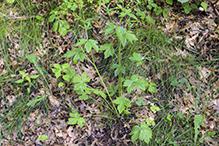 |
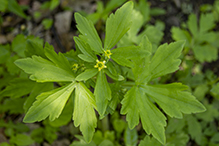 |
||||
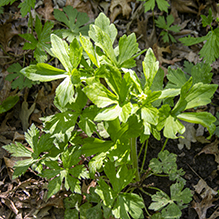 |
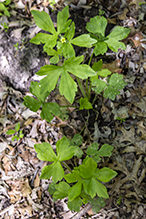 |
||||
 |
|||||
Inflorescence |
|||||
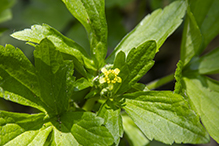 |
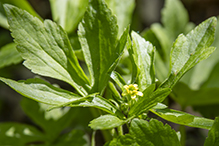 |
||||
Flower head |
|||||
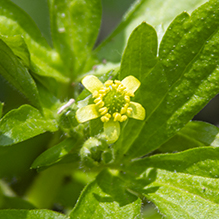 |
|||||
Stem leaves |
|||||
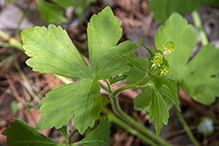 |
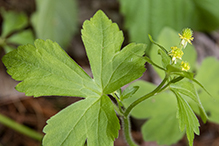 |
||||
Variegated basal leaves |
|||||
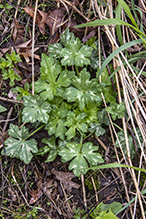 |
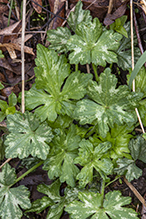 |
||||

Slideshows |
||

Visitor Videos |
|||
Share your video of this plant. |
|||
| This button not working for you? Simply email us at info@MinnesotaSeasons.com. Attach a video, a YouTube link, or a cloud storage link. |
|||
Other Videos |
|||
| Woodland Edge: Hooked Buttercup Sanders' Wildflowers |
|||
About
Mar 5, 2020 Enjoy a collection of educational videos by Dr. Roger Sanders about the spring wildflowers found throughout the southern Appalachians. These videos are a production of Core Academy of Science, a christian nonprofit based out of Dayton, TN. Donate to the Sanders Fund: Sanders Scholars Program: Social Media: |
|||

Visitor Sightings |
|||||
Report a sighting of this plant. |
|||||
| This button not working for you? Simply email us at info@MinnesotaSeasons.com. Be sure to include a location. |
|||||
|
|||||
MinnesotaSeasons.com Sightings |
|||||

Created: 7/4/2021
Last Updated:
